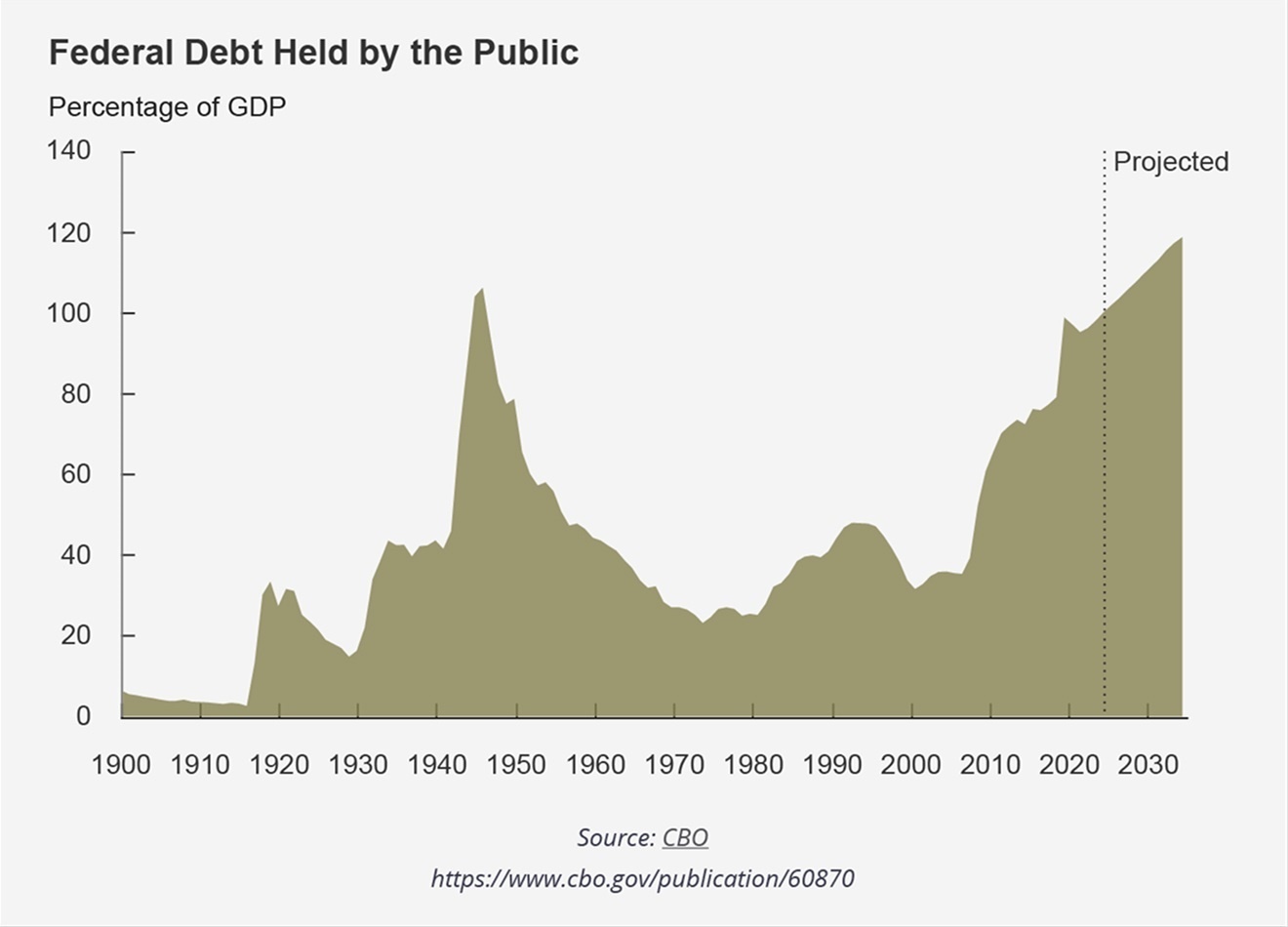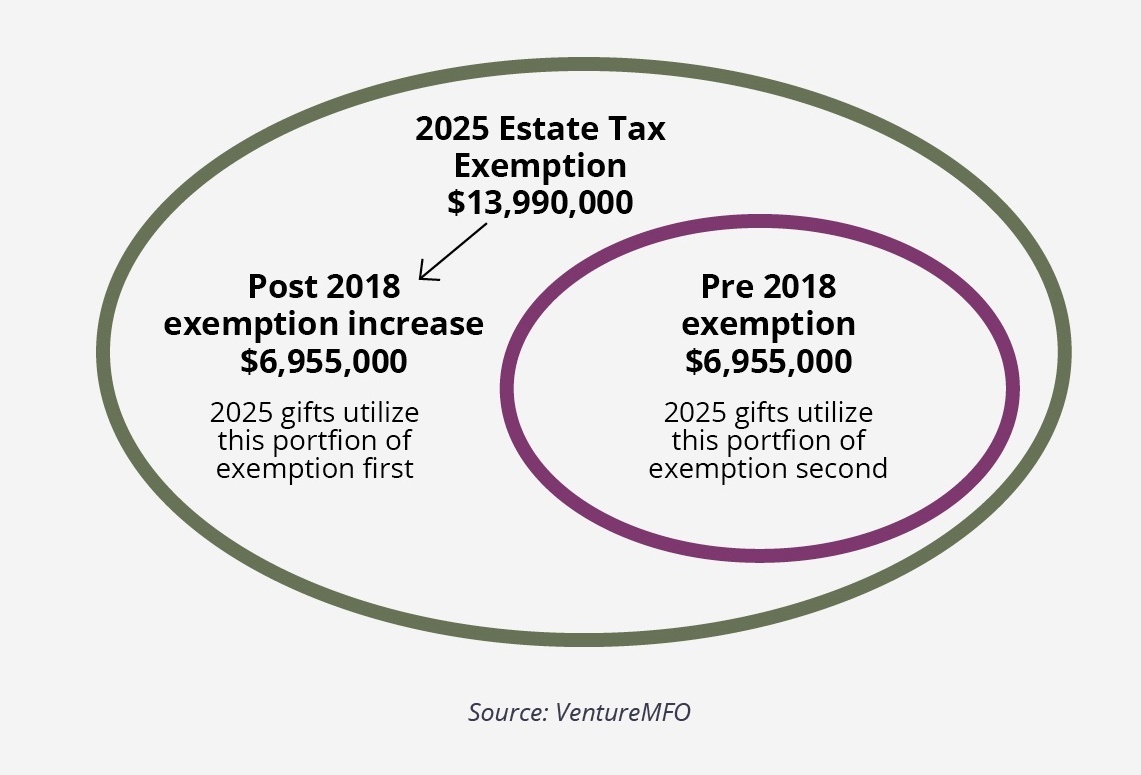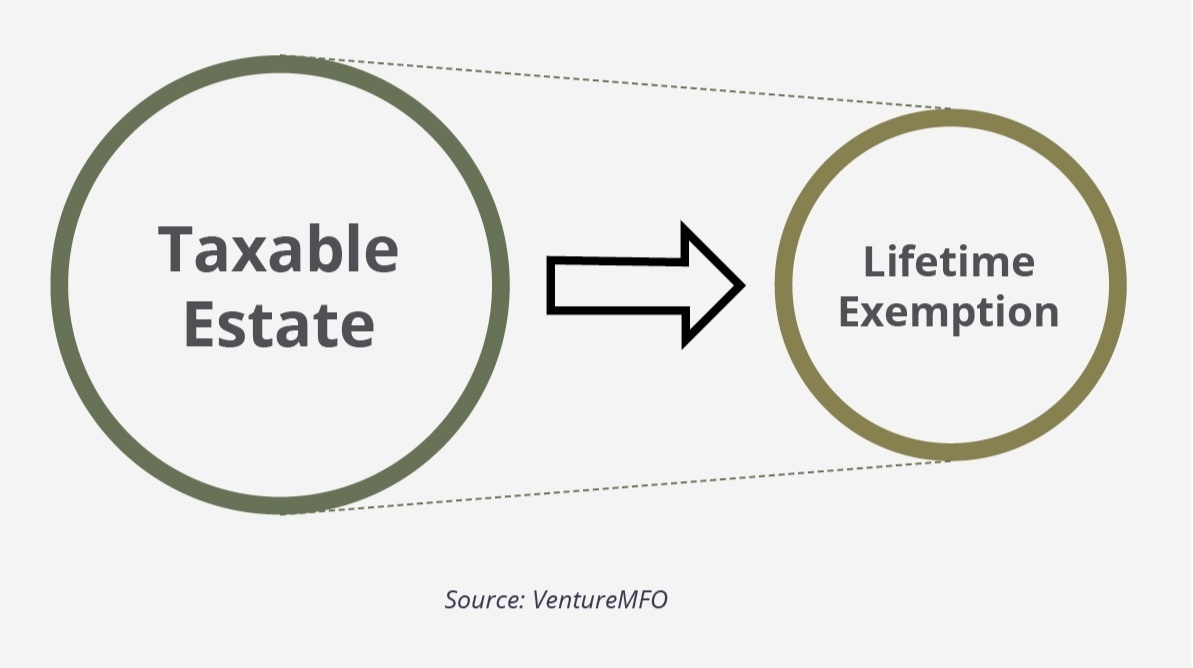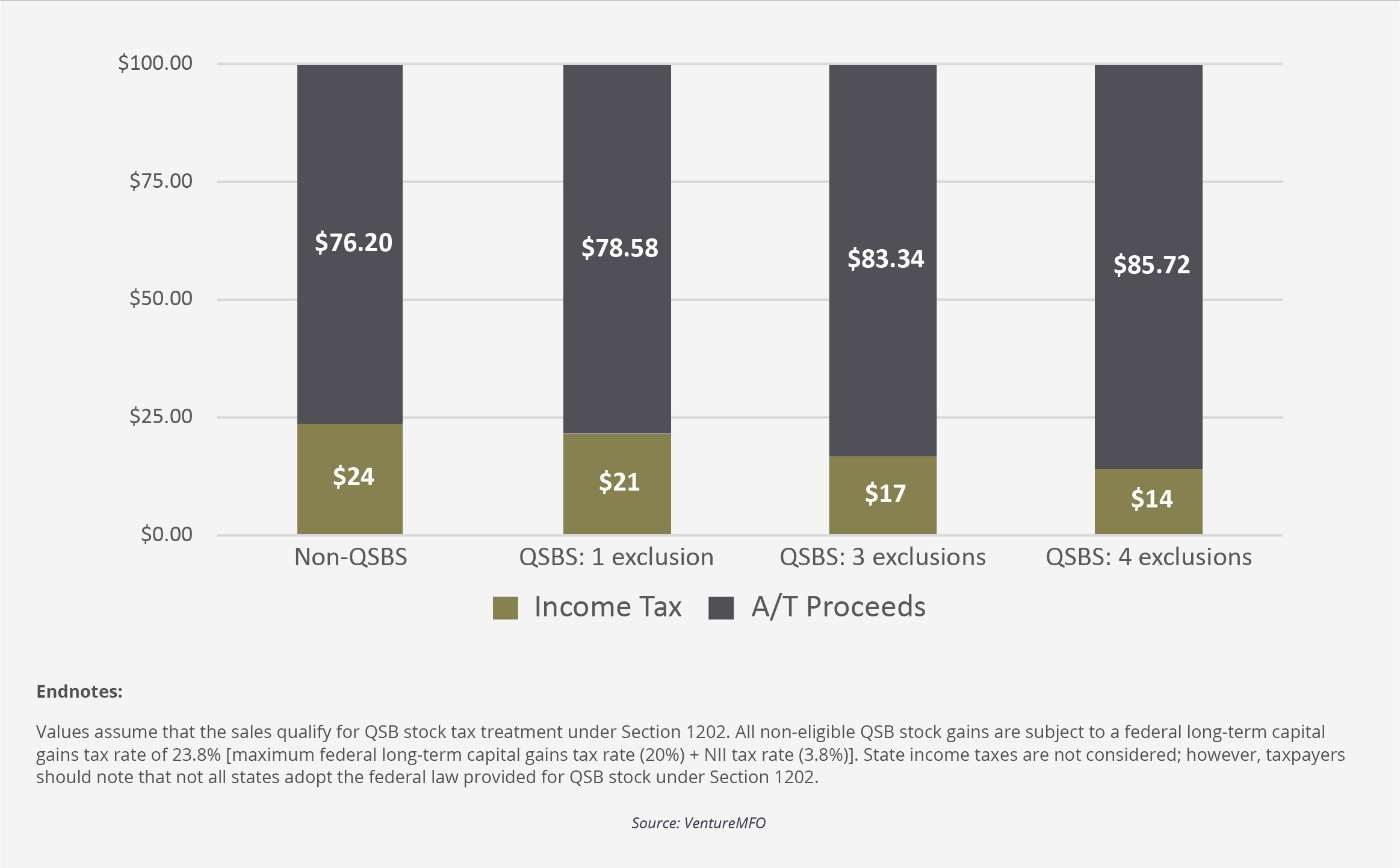Sofer Advisors’ Jay Reardon contributed to this article, originally published on VentureMFO on March 31, 2025.
Debt Dynamics
It’s no secret the national debt has grown rapidly. In fact, total public debt is $28.91 trillion as of January 2025, an increase of nearly 68% from January 2020—and is forecasted to swell to $52 trillion as of 2035, an increase of nearly 80% from current levels. Importantly, debt as a percentage of GDP is 100% as of January 2025, and forecasted to increase to 118% into 2035—which can lead to lower growth and higher interest costs and taxes.
Forecast of Federal Debt
Key Takeaway: By 2035 the debt held by the public swells to 118% of GDP – an amount greater than at any point in the nation’s history.
New planning paradigm
Due to modern debt dynamics, secular changes in tax policy and interest rates can lead to a paradigm shift in wealth planning—which may require a top-down macroeconomic approach to structuring new and existing wealth plans for high-net-worth families.
To capitalize on time-sensitive opportunities relevant in the current high-rate environment, business-owning families can do the following:
- form flexible trust structures to transfer and protect wealth,
- maximize the benefit of gift planning by leveraging business appraisal strategies, and
- take advantage of tax minimization techniques to reduce capital gain exposure upon the sale of a closely-held business.
Spousal Lifetime Access Trusts
The current federal estate, gift, and generation-skipping transfer (GST) tax exemptions are $13,990,000 per person and scheduled to revert back to $6,995,000 per person, inflation adjusted, on January 1, 2026 under the 2017 TCJA.
For a young entrepreneur, the concept of making an irrevocable gift, such as an interest in their closely held business—for an estate tax benefit not to be enjoyed during their lifetime—can be intellectually challenging.
If flexibility is more appealing, business-owning families may consider Spousal Lifetime Access Trusts (or SLATs)—which are irrevocable trusts created by one spouse (the donor-spouse) for the benefit of the other spouse (the donee-spouse).
Lifetime Exemption Reduction Calculation Chart
Key Takeaway: The 2025 federal lifetime exemption may be reduced by half if not fully utilized by the sunet of 2017 TCJA tax cuts at the end of 2025.
Download our full article to determine if a SLAT is the right structure for your family and business interest.
Valuation Strategies
For business-owning families utilizing their gift exemptions prior to the potential sunset at the end of 2025, leveraging valuation discount strategies in a high-rate environment may help maximize the value of the transfer planning.
Interest rates play an integral role when determining the value of an interest in a closely held business. Generally, higher discount rates, stemming from higher interest rates, can lower the present value of future cash flows—which can reduce the overall value of the business as well as any minority interests in the business.
When gifting a minority interest in a closely held business, a certified appraiser is required to determine the fair market value of the business interest—which generally includes consideration of discounts for lack of control (DLOC), lack of marketability (DLOM) and lack of voting (DLOV) that can further reduce the transfer value.
Comparing a Large Taxable Estate to a Lifetime Exemption
Key Takeaway: Valuation strategies may help minimize taxable estate values through minority interest transactions, thereby maximizing the utilization of lifetime exemptions.
Download the full article to see our Case Study: The Impact on Business Enterprise Value When Adjusting for Valuation Discounts and Higher Interest Rates.
Qualified Small Business Stock: Tacking, Stacking and Rolling
In an effort to stimulate small business growth, and U.S. economic growth generally, lawmakers have provided a highly attractive tax incentive to investors in small businesses. In many cases, taxpayers are eligible for 100% gain exclusion on the sale of qualified small business (“QSB”) stock—potentially a zero-percent effective tax rate.
Requirements for Section 1202 can be rigorous. Given the complexity, owners of stock in a closely held C corporation should determine if their ownership interest meets the statutory definition of QSB stock under Section 1202.
Section 1202 prescribes the maximum gain that can be excluded (or partially excluded) each taxable year shall not exceed the GREATER of: $10 million reduced by aggregate eligible gain taken for prior taxable years ($10 million per taxpayer limitation); or 10 times the aggregate adjusted basis of QSB stock sold by the taxpayer in the taxable year (10 times basis limitation).
After-Tax Proceeds: $100 Million Sale, Zero Tax Cost Basis
Key Takeaway: Stacking QSB stock gain exclusions can substantially reduce the federal long-term capital gains tax rate on the sale of a business-potentially a near zero-percent effective tax rate.
Download the full article to determine whether your ownership interest meets the statutory definition under Section 1202.
In Conclusion
During periods of fiscal dominance, modern debt dynamics may result in less favorable tax and interest rate policies. Indeed, these secular changes may lead to a paradigm shift in wealth planning—requiring a top-down macroeconomic approach to the design and implementation of income tax and wealth transfer strategies for high-net-worth families.
However, time is of the essence. The 2017 TCJA tax cuts are set to sunset at the end of 2025, and funding future budget deficits may influence lawmakers’ decision to extend favorable tax legislation. Moreover, although interest rates are forecasted to remain higher over the next decade—it is plausible that rates have peaked for this economic cycle, and move lower in the near-term.
Certainly, business-owning families may need to execute planning strategies ahead of economically-driven and time-sensitive tax and interest rate policy decisions; however, with the right guidance and foresight—there is a wide array of techniques available to transfer wealth and minimize taxes in the current environment.
https://fiscaldata.treasury.gov/datasets/debt-to-the-penny/debt-to-the-penny
This material is for your general information. The discussion of any estate planning alternatives and other observations herein are not intended as legal or tax advice and do not take into account the particular estate planning objectives, financial situation, or needs of individual clients. This material is based upon information from various sources that VentureMFO and Sofer Advisors believes to be reliable, but VentureMFO and Sofer Advisors makes no representation or warranty with respect to the accuracy of completeness of such information. Views expressed herein are current only of the date indicated, and are subject to change without notice. Forecasts may not be realized due to a variety of factors, including changes in law, regulation, interest rates, and inflation.







